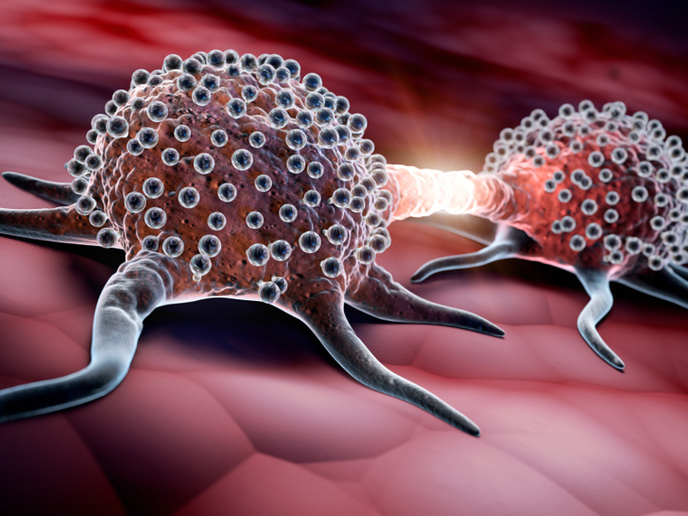Targeting hypoxia to cure cancer
Cancer tumours are characterised by areas with lower oxygen levels compared to normal tissues, a phenomenon known as hypoxia. Emerging evidence indicates that hypoxia may negatively impact the outcome of radiotherapy and chemotherapy by reducing sensitivity, hampering drug access or inducing tolerance. To survive unfavourable environmental conditions, cancer cells activate protective regulatory mechanisms, among them the ability to migrate to new areas in the body. Based on this hypothesis, the EU-funded 'Metastatic tumours facilitated by hypoxic tumour micro-environments' (METOXIA) study set out to investigate the molecular mechanisms underlying hypoxia-driven metastasis. The aim was to help identify small molecules that could reduce metastasis and improve patient outcome. METOXIA focused considerable efforts on determining the effect of the hypoxia inducing factor (HIF)and Notch on various essential cellular functions including metabolism and angiogenesis. In particular, inhibitors against the HIF-activated carbonic anhydrase IX protein reduced the metastatic potential of experimental tumours and raised their sensitivity to therapy. Additional putative hypoxia-activated targets include proteins that are implicated in pH regulation, metabolism and cell growth. Scientists demonstrated that variations in tumour-oxygenation between deeper and more moderate hypoxia influences metastasis and response to therapy. This information will significantly impact both future research and the design of anti-cancer therapeutics. An important deliverable of the METOXIA consortium was a list of hypoxia genes envisioned to predict the efficacy of hypoxic intervention. When tested in a large randomised phase III study, this hypoxia gene signature helped identify cancer patients who could be sensitised to radiotherapy. METOXIA partners patented the generated inhibitor compounds and envision screening them in clinical tests in the near future. They have set up a spin-off company to further develop the patented inhibitors. METOXIA activities provided basic knowledge into various mechanisms activated by tumour hypoxia. This improved understanding should lead to novel anti-cancer targets and new treatment strategies.
Keywords
Hypoxia, cancer tumour, metastases, radiotherapy, Notch, inhibitor, carbonic anhydrase IX







